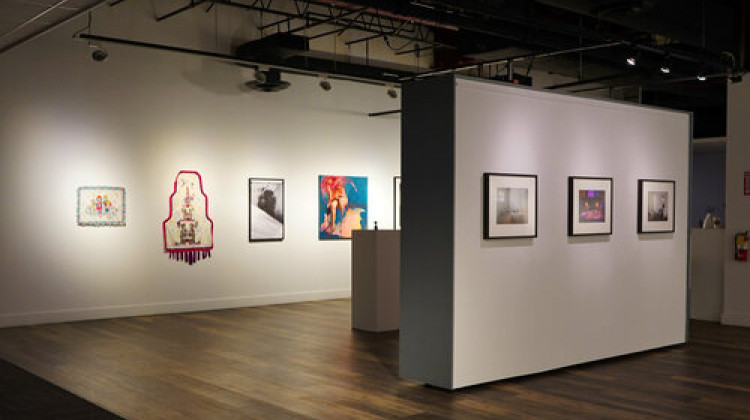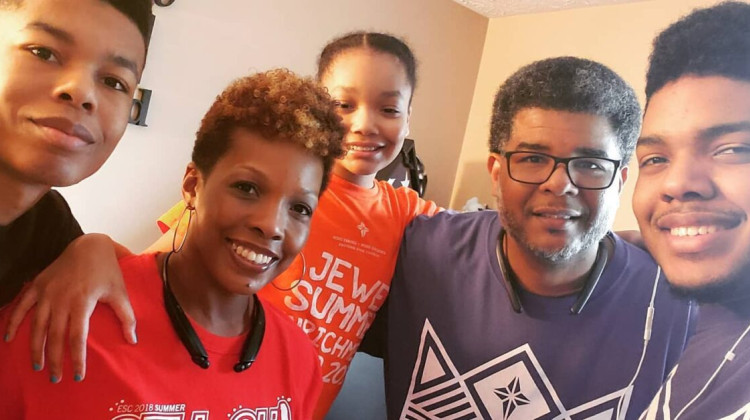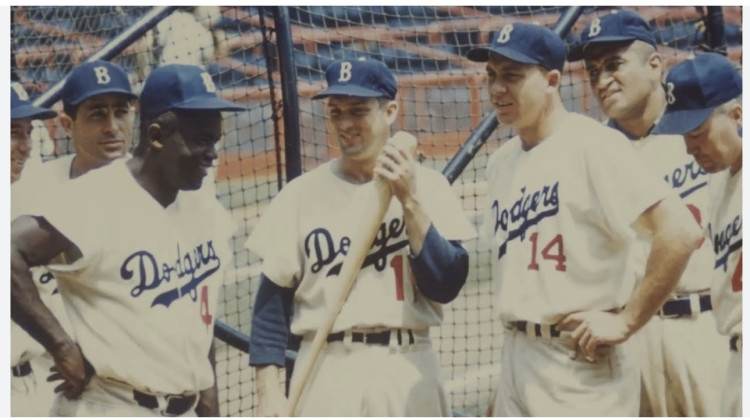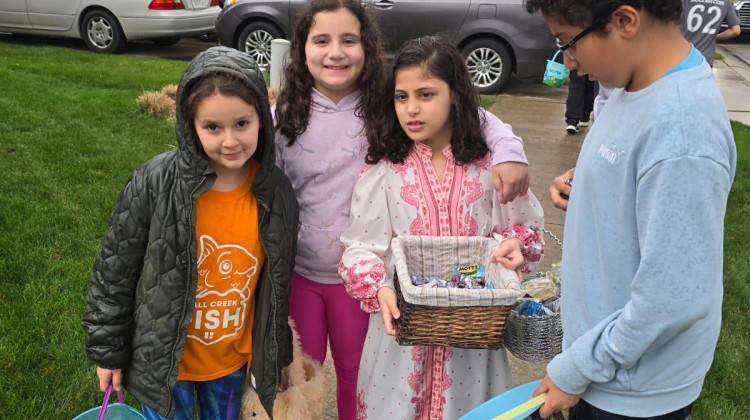Tony Quintana and Maria Behringer of QB Curators have been managing galleries, artists and exhibits for several years. Their latest exhibit is up through February in The Schwitzer Gallery at the Circle City Industrial Complex created a new challenge.
WFYI’s Jill Ditmire spoke to both via zoom and asked them how they gathered, installed and opened a visual art show during a pandemic.
Transcript
QB CURATOR MARIA BEHRINGER: The biggest thing that is different is just that the traveling part and meeting all the artists in person and showing their work in person for the first time, that was all completely cut out.
QB CURATOR TONY QUINTANA: Yeah.
BEHRINGER: Like we, it was just completely online, Tony and I were sending images back to each other. Yeah, the whole face to face thing, which is what we love to do, and, you know, gets us out of the house that was obviously completely just went out the window.
QUINTANA: Right? Yeah. And then I think following that, like, just, then I feel like just the artists kind of even us like going to their studios and visiting with them. And them coming to us. Like, it doesn't feel like you can do it amidst the pandemic and all this stuff that's going on, but it just felt like five degrees harder to like, do it because like, everything moves so fast, virtually, um, a lot of the artists are prepared, thank goodness, like, you know, they have portfolios ready to go. But it's just, it's different, like Maria says, because we've viewed everything online and seen it in physical time in real time is like, such a huge thing for us. Since we've worked with so many artists and fields and mediums, I don't know, that's how I felt for sure.
BEHRINGER: Mm-hmm.
QUINTANA: And I know, we talked about it a lot during install, so or at the show, too.
JILL DITMIRE: And you weren't able to have a show for everyone to come to you had to take appointments, how did that go?
BEHRINGER: It went fine. I was really happy with the amount of people we were able to come to see the show, despite all of that, and we were able to space out everybody and it was safe. And we had, I think maybe five people in the gallery at once total–
QUINTANA: Yep!
BEHRINGER: Because a few people drop down, that just had been out and still wanting to come support us. But it was nice. It was obviously different.
QUINTANA: One-hundred times different.
BEHRINGER: But um Oh, yeah. But I still felt the support, you know, and the fact that we got people to come down and see it at all made me really happy.
QUINTANA: Yeah, the appointments are still coming in and the requests to see it virtually even are coming in. So that's a huge perk.
DITMIRE: What did you learn about your artists and the way they've been handling the pandemic, because that was the theme of the show?
BEHRINGER: There was just a lot of positivity, you know, coming out of the negative experience that they had been having, and that, you know, they were just so thankful that we are still we were even state still able to have an exhibition because for a lot of them, you know, all their all of their projects and kind of been canceled.
QUINTANA: And it's almost like it didn't faze them, because a lot of them were like, ‘well, this is kind of the life of solitude and isolation that we work with.’ And some were able to like massive production of just works and really, really great bodies. I know, one of the artists was like, well, I had some time and I delve into new projects and all this other stuff,
DITMIRE: As curators, what have each of you learned from all of these pivots and changes and ups and downs this past year that you'll take with you as you continue your careers.
BEHRINGER: I think that I don't not like Tony and I have been, you know, we have had all walks of life working with so many different artists coming in and out and even changing spaces and being on one side of town and then going to the other side of town Street. You know, it just it gives me more confidence in what we can do and what we can put out.
QUINTANA: Since we have done so much of it so differently. I mean, even in physical time, I feel like the only time I saw Maria was like practically installing at the show. But even with that it was like having that kind of space away and time away. I mean, we just brainstormed and had so many ideas. And I think like you know, it's such a cliched saying of all these projects that people were like fast tracking and thinking of like for you know, 2024 we are like trying to implement, ASAP and I think it's a huge perk for us and I really, I'm excited.
DITMIRE: Well, we need your creativity. We need your positivity and we need the two of you around. So thank you for everything that you do and we look forward to the next show. Be well.
QUINTANA: Awesome.
BEHRINGER: Thank you, Jill. We appreciate it.
QUINTANA: Thank you, Jill.
 DONATE
DONATE









 View More Programs
View More Programs

 Support WFYI. We can't do it without you.
Support WFYI. We can't do it without you.